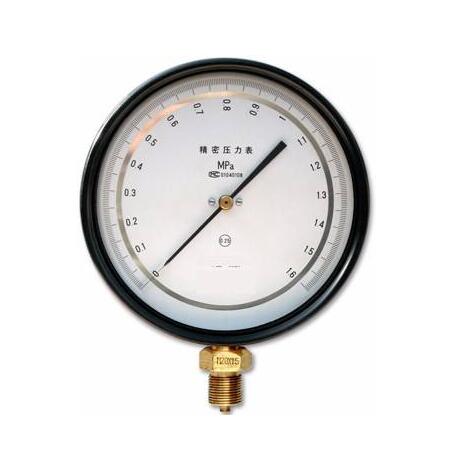Precision pressure gauge
Description
The precision pressure gauge is mainly used to calibrate the industrial common pressure gauge. The precision pressure gauge can also accurately measure the pressure of non-corrosive, non-crystallized and non-solidified media such as copper alloy and alloy structural steel on the process site.
The precision pressure gauge is equipped with mirror ring (TYPE A and B) under the scale line for clearer and more accurate reading in use.
Structure principle: the precision pressure gauge is composed of pressure measuring system, driving mechanism, indicating device and shell. The pressure measuring elastic element of the precision pressure gauge is processed by special technology, so that the performance of the precision pressure gauge is stable and reliable. The working principle of precision pressure gauge is: when the pressure of the measured medium acts on the elastic element, it will produce elastic deformation and displacement, which will be amplified by the drive mechanism driven by the pull rod, and the measured pressure will be indicated by the indicating device.
Main technical indicators:
Precision pressure gauge measuring range, accuracy grade and characteristics
model | Spring tube material | Measuring range MPa | Degree of accuracy | Structural characteristics of |
YB-150A | Tin phosphor bronze Chrome vanadium steel | 0-0.1; 0-0.16; 0-O.25 ; 0-0.4; 0-0.6; 0 and 1; 0-1.6; 0-2.5; 0 to 4; 0 to 6; 0 to 10; 0 to 16; 0 to 25; 0 to 40; 0-60 | 0.4 | The mirror |
YB-150B | 0.25 |
Precision pressure gauge operating environment: 5 ~ 40℃, relative humidity is not more than 80%, and the environment vibration and pressure source fluctuation have no influence on the accurate reading of the instrument. Impact of temperature of precision pressure gauge: If the ambient temperature deviates from 20±3℃ (type A) or 20±2℃ (type B), the additional temperature error should be considered: 0.4%/10℃



